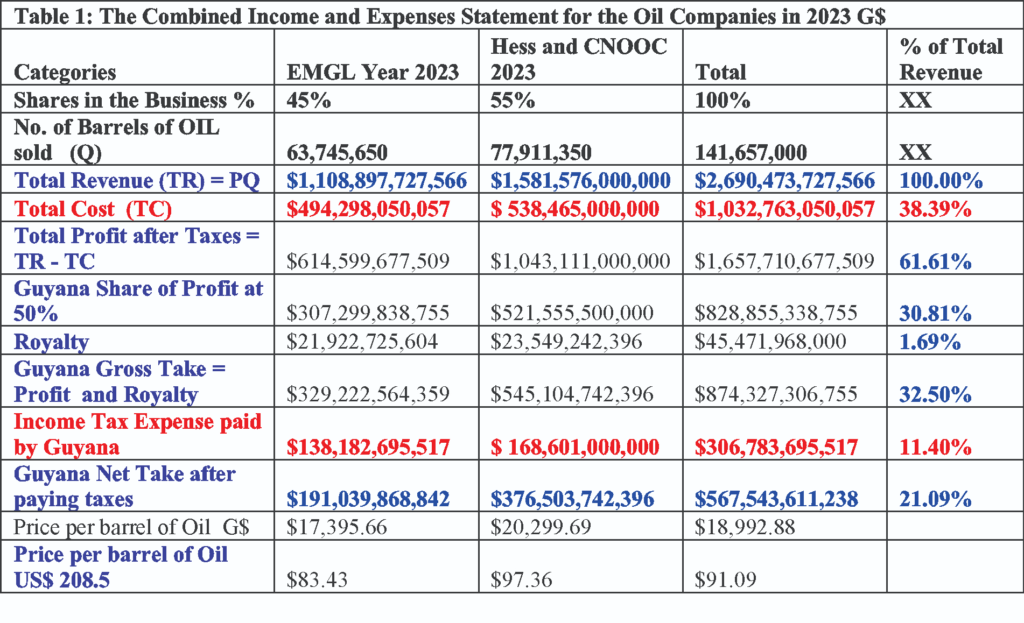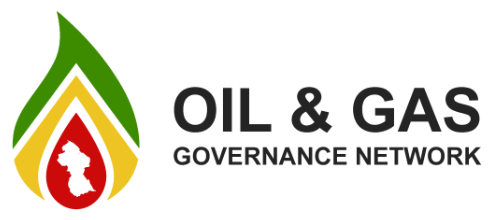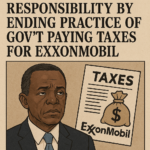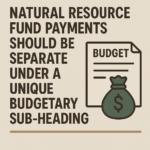Having received copies of the 2023 Financial Statements of ExxonMobil Guyana Limited (EMGL), Hess, and CNOOC, with ownership rights in the company of 45 percent, 30 percent, and 25 percent, respectively, I decided to undertake a brief analysis of the 2023 financial information.
But before doing so, it is important to state that the Government, in consultation with the Institute of Chartered Accountants of Guyana (ICAG), should introduce a standardized format for the presentation of the oil companies’ financial statements. For example, only EMGL had an entry for royalty of G$21,922,725,604, while Hess and CNOOC did not report separate entries for royalties. To overcome this lack of information, the 2023 Annual Report for the National Resource Fund (NRF) reported that a total of G$45,471,968,000 was received as royalties; and therefore, one can assume that the difference of G$23,549,242,396 was the amount paid by CNOOC and Hess. Because of the lack of disaggregated royalty information, the submitted financial data for Hess and CNOOC will be combined in the presentation below, while the submitted EMGL financial information will be presented as a separate entry. It is also recommended that all future financial reports of the Consortium must include the number of barrels of oil sold. As a result, the data of 141, 657,000 barrels of oil sold, as reported in the Bank of Guyana 2023 Annual Report, will be included in the analysis below.
According to the published financial data by the three companies, a total of G$2.69 trillion (or US$12.9 Billion at an exchange rate of US$1 = G$208.5) in total revenue was earned, with Hess and CNOOC’s total revenue amounting to G$1.58 trillion and EMGL’s total revenue being G$1.11 trillion (Table 1). The total cost in 2023 recorded in the financial statements and linked with the sale of 141.7 million barrels of oil, is G$1.03 trillion; this yields an average cost per barrel of US$34.97. The average selling price of a barrel of oil is US$91.09, assuming an exchange rate of US$1.00 = G$208.50 for both the price and cost for a barrel of oil in US dollars.
It is important to note that the total cost (TC) of the oil extracted and sold is only 38.39 percent of total revenue (TC/TR = G$1.03Trillion/G$2.69 trillion), and not 75 percent of total revenue (TR) as stated in the Production Sharing Agreement (PSA): Total Cost (TC) = 75%TR; instead, the actual cost derived from the 2023 financial Statements is: TC = 38.39TR.
Consequently, the total profit after taxes in 2023 is G$1.66 trillion (US$7.95 billion), of which Guyana’s profit share at 50 percent isG$874.3 billion (US$3.98 billion). According to the 2023 NRF Annual Report, Guyana only received US$1.39 billion. Should a reconciliation exercise be undertaken?

Meanwhile, it is more than likely that the average cost of a barrel of oil can be less than US$34.97, given the findings by the auditors of the unauthorized expenses in the recent audit report covering the period 2018-2020 https://www.stabroeknews.com/2023/12/24/opinion/letters/questions-abound-about-this-us7-3b-cost-recovery-audit-report/; and also, the misuse of funds due to the absence of ring-fencing. This cost will be further reduced when the capital cost has been repaid in full, once the appropriate audit is undertaken, and there is no spending on new projects with the profits from the existing operations.
In the Natural Resource Fund (NRF) Annual Report 2023, a sum of G$45.5 billion in royalty payments was deposited into the NRF account. However, since royalty payments are based on 2 percent of total revenue, the amount of royalty payments must be G$53.8 billion, given total revenue of G$2.69 trillion. Consequently, a reconciliation exercise should be completed to correct what appears to be a significant shortfall in the royalty that Guyana should have received. A similar exercise should be completed with the profit share for Guyana, given the profit amount recorded in the financial statements of the companies.
The total taxes which should have been paid in 2023 by the companiesareG$306.8 billion, and this amount is 11.403 percent of total revenue of G$2.69 trillion (Table 1). Unfortunately, and in keeping with the 2016 PSA, Guyana has this bizarre responsibility of paying the taxes from its share of oil revenue to the Guyana Revenue Authority; and thereafter to issue a fake tax receipt to the companies for money the Government never received. This is fraud and no government should be paying the taxes for any company, as this is a horrible act against the sovereignty of Guyana. In other words, this outcome repudiates contract sanctity, for companies cannot be bigger than countries.
Equally distressing is the notion that the royalty paid (G$45.5 billion) is less than the income tax of G$306.8 billion (11.403 percent of total revenue) that is owed to Guyana; and that Guyana is paying out of its oil earnings to satisfy a clause in the 2016 PSA. In fact, the tax G$306.8 billion, equivalent to US$ 1.47 billion that Guyana pays on behalf of the oil companies, is more than the total value of exports in 2023 of US$1.15 billion from the combined export earnings from sugar, rice, bauxite, gold and timber. Can you imagine what that these two baskets of money- the true profit share, and the taxes owed- can do to end the poverty and hunger experienced by half of the Guyanese population? That sum would also reduce the need for government borrowing that will be the bitter inheritance of future generations, if corrections are not implemented. Guyana has to stop being a ‘packoo’ (pacu), the fish in Guyanese Creole that identifies spinelessness. Policymakers must act!
Sincerely,
Dr. C. Kenrick Hunte
Professor and Former Ambassador











